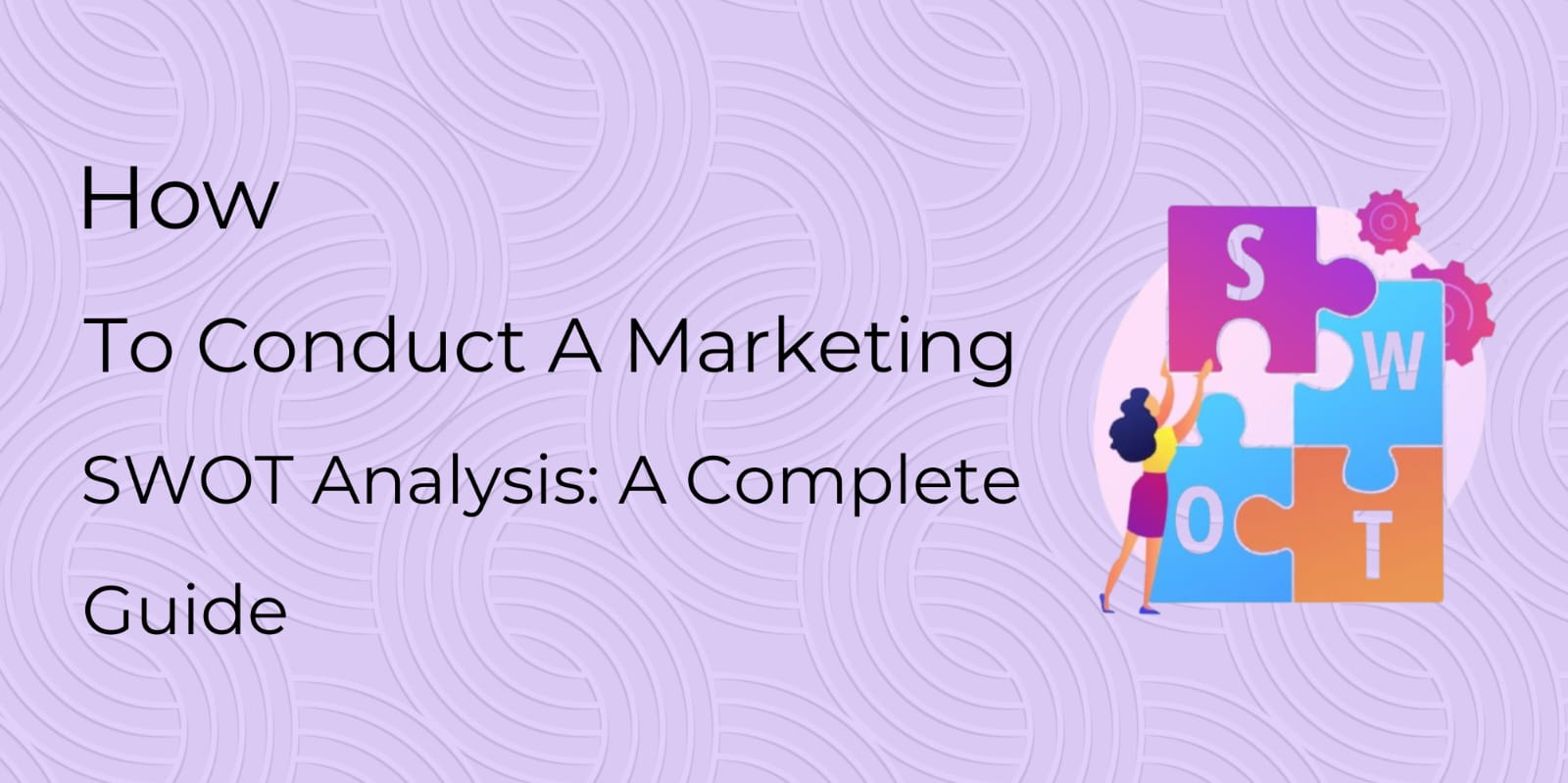In today’s ever-changing marketing world, the most important thing is to really get to know your business inside and out. One of the most potent weapons marketers have to evaluate where they are and where they are headed is a SWOT analysis. A SWOT analysis allows you to examine your Strengths, Weaknesses, Opportunities, and Threats in an organised and thoughtful manner. Whether you are introducing a new product, optimising a campaign, or overhauling your whole strategy, a marketing SWOT analysis provides you with a clear view of where you stand.
In this in-depth guide, we will take you through the entire process of how to do a marketing SWOT analysis — step by step.
● Why Is A Marketing SWOT Analysis Necessary?
Having a SWOT analysis done provides some useful advantages for your marketing:
- Strategic clarity: Puts into perspective a clear framework to make sense of your brand’s position within the market.
- Decision-making: Facilitates better decision-making by prioritising marketing activities that build on strengths and opportunities and mitigate weaknesses and threats.
- Competitive advantage: Identifies areas where your brand is unique and where you can outperform competitors.
- Enhanced resource allocation: Tells you where to allocate your marketing budget for the greatest effect.
- Future-proofing: Aids in forecasting potential issues and planning in advance for them before they reach a critical point.
● When Do You Do a Marketing SWOT Analysis?
A SWOT analysis can be helpful in the following situations:
- Preparing to release a new product or campaign
- Conducting quarterly or yearly marketing reviews
- Entering a new market or audience segment
- Rebounding from a decrease in sales or interaction
- Checking on the competition or market trends
● Step-by-Step Guide to Performing a Marketing SWOT Analysis
Now let’s lay out what you need to do to perform an effective SWOT analysis of your marketing strategy.
Step 1: Define the Objective
Begin by determining the particular purpose of your SWOT analysis. Are you assessing your overall marketing strategy or one specific campaign, product, or channel?
Examples:
- “Assess the strengths and weaknesses of our email marketing strategy.”
- “Assess brand positioning before entering the Southeast Asia market.”
- “Identify threats impacting our social media engagement.”
Having a clear objective ensures your SWOT analysis remains focused and actionable.
Step 2: Gather Internal Data
For the Strengths and Weaknesses sections, collect data from your internal marketing activities. This includes:
- Campaign performance reports
- SEO and website analytics
- Social media insights
- Customer feedback and reviews
- Sales conversion rates
- Team performance and capabilities
Examine this data to see what’s succeeding and what’s not.
Step 3: Evaluate Strengths
Ask yourself:
- What are you doing well in marketing?
- What have been the most successful marketing campaigns?
- What do you have that is uniquely valuable or different (brand equity, loyal base, great people, solid social presence)?
- What technologies, tools, or assets make you different?
Examples of marketing strengths: - High brand recognition
- High traffic to website with low bounce rate
- Strong social media customer engagement
- Great content marketing metrics
- In-house creative talent that can handle tasks
Be honest but positive — this is your moment to put your strengths forward.
Step 4: Evaluate Weaknesses
Here you must critically examine your marketing and discover weaknesses or areas for improvement.
Ask:
- What’s holding marketing back?
- Are there areas in which your team is lacking skills or resources?
- Are your campaigns not performing as well as they could be in some areas?
- What is the type of feedback you’re receiving from customers or prospects?
Examples of marketing weaknesses: - Low conversion rates from paid advertising
- Limited email list or low open rates
- Erratic branding or messaging
- Poor mobile experience on the site
- Lack of marketing automation tools
Admit weaknesses openly so you can strategise to improve or offset them.
Step 5: Identify Opportunities
Now look outside your company. Opportunities frequently come from changes in market trends, technologies, or consumer behaviour.
Ask:
- What are new trends we can capitalise on?
- Are there new markets or segments of customers to approach?
- Are our competitors overlooking something we can provide?
- Are new platforms or technologies being developed that we can use?
Some examples of marketing opportunities: - Increasing use of short-form video (e.g., TikTok, Instagram Reels)
- Sustainable or ethical product demand
- Venturing into unpenetrated geographic markets
- Strategic alliances or influencer partnerships
- SEO optimization based on emerging keyword trends
Step 6: Identify Threats
Threats are items outside of your control that may impede your marketing success. It may be economic downturns, rising competition, algorithm updates, or changing consumer tastes.
Ask:
- What is going on in the industry that might damage us?
- Are new players moving into the marketplace?
- Are existing channels becoming less efficient?
- Are there regulatory updates that could affect marketing?
Examples of marketing threats: - Google algorithm changes cutting organic traffic
- Ads becoming more expensive to buy
- More competition within your space
- Bad public opinion or reviews
- Data protection rules impacting targeting
You can’t manage these, but knowing them means you can ready yourself and adjust.
Step 7: Organize the SWOT Matrix
Once you’ve laid out all your results, put them into a 4-quadrant SWOT matrix such as this:
Strengths and Weaknesses List internal strengths that provide competitive advantage to your marketing. List internal limitations that must be fixed or overcome
Opportunities and Threats: List external trends and opportunities you can utilise. List external threats and challenges that could negatively affect your marketing success
This graphical structure allows you to see more clearly patterns, relationships, and strategic priorities.
Step 8: Analyze and Take Action
A SWOT analysis is only worth anything if you make it into action. Apply the learnings to tighten up your strategy by:
- Doubling down on core areas of marketing strength
- Establishing plans to fix or eliminate weaknesses
- Leverage the most promising opportunities
- Creating contingency plans to address threats
Example Actions Based on SWOT:
- If a strength is “high email open rate”, double down with segmentation and personalisation.
- If a weakness is “poor SEO performance”, make a content optimisation investment or find an SEO professional.
- If an opportunity is “increased search demand for eco-friendly products”, think about shortlisting a green-orientated campaign.
- If a threat is “increased PPC costs”, try organic alternatives such as influencer marketing or SEO in content.
● Marketing SWOT Analysis Tips for Success
- Be honest and objective: Don’t sugarcoat weaknesses or exaggerate strengths.
- Use data: Where possible, base your analysis on actual performance measures.
- Involve the team: Consult with several stakeholders — marketing, sales, customer service, etc.
- Keep it focused: Don’t attempt to analyse too much at once. Analyse a single campaign or goal.
- Update regularly: Markets shift. Repeat SWOT every 6–12 months or before significant campaigns.
Final Thoughts
A marketing SWOT analysis is an easy but amazingly powerful means of evaluating your existing strategy and future planning. By taking an honest look at your strengths, weaknesses, opportunities, and threats, you can make better decisions, beat the competition, and expand your brand with confidence.
Whether you’re a small business owner, a digital marketer, or a brand strategist, make SWOT analysis a regular part of your planning process. It’s not just a buzzword — it’s a practical tool for marketing success.


